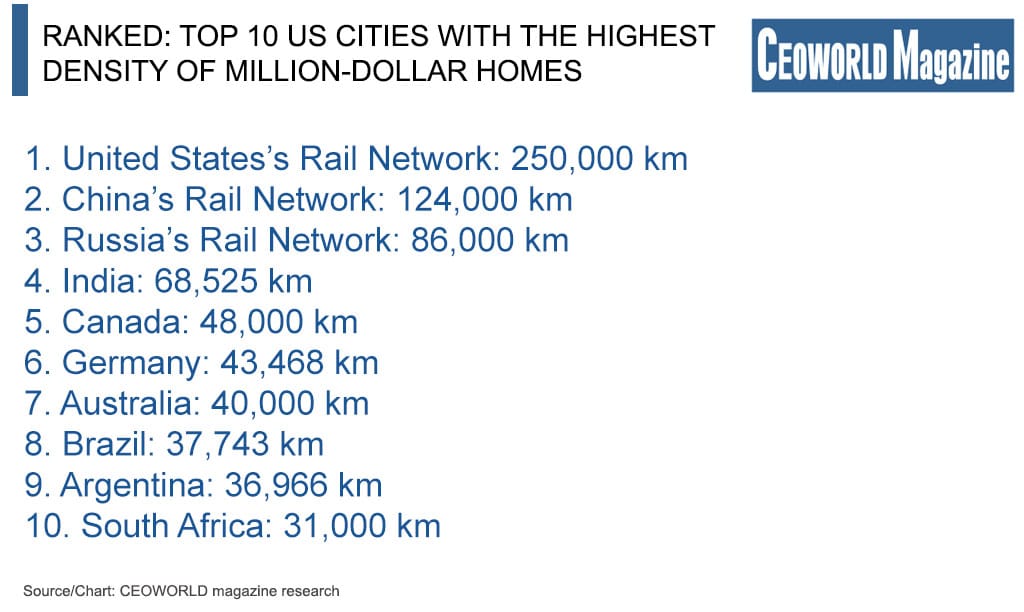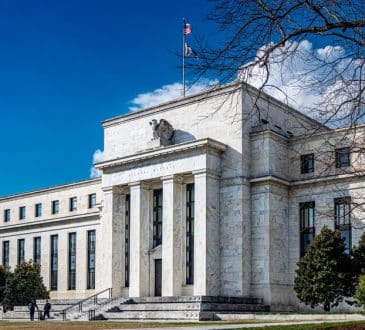Revealed: These are the top 10 US cities with the highest density of million-dollar homes

The American housing landscape has been dramatically reshaped in recent years, particularly following the rapid growth in home prices during the height of the pandemic. This transformation is most evident in the increasing prevalence of million-dollar homes in certain cities across the United States. Despite the perception of such high property values as excessive for the average American, the reality in some urban areas tells a different story. A comprehensive study by CEOWORLD magazine sheds light on this phenomenon, pinpointing cities where million-dollar homes are not just a rarity but a common feature of the housing market.
At the forefront of this trend is San Francisco, a city synonymous with steep property prices. According to the study, an astonishing 81% of homes in San Francisco are valued at $1 million or more. This high percentage is reflective of several factors, including the city’s economic prosperity, its status as a global technology hub, and its cultural and historical appeal. However, the picture is more nuanced than it first appears. In San Francisco, the size and condition of these million-dollar homes can vary significantly. For instance, in some of the city’s most sought-after neighborhoods, a 700-square-foot condo can command a price of $1 million. This is in stark contrast to the suburban areas of the city, where homes nearly four times larger are listed at similar prices, highlighting a significant disparity in value based on location.
San Jose, the heart of Silicon Valley, follows closely behind, with 80% of its homes surpassing the million-dollar mark. The city’s position as a global center for technology and innovation has attracted a wealth of talent and investment, contributing to its high real estate values. The presence of major tech corporations and a plethora of startups has not only created numerous high-paying jobs but also led to an escalated demand for housing, pushing prices to new heights.
Other Californian cities feature prominently on this list as well. Anaheim, with 55% of its homes valued at over a million dollars, benefits from its proximity to major entertainment destinations and a robust local economy. Oakland, with 49%, has seen a spillover effect from the expensive San Francisco market, coupled with its own burgeoning tech sector. San Diego’s 40% can be attributed to its desirable coastal location and vibrant cultural scene. Los Angeles, with 38%, continues to be an economic powerhouse, drawing people with its entertainment industry and diverse economic base. Similarly, Oxnard, with 35%, combines coastal appeal with a growing economy.
Moving away from the West Coast, Honolulu in Hawaii stands out with 38% of homes valued above the million-dollar threshold. The city’s unique combination of being a prime tourist destination, coupled with limited land availability for development, contributes significantly to its high property values. On the mainland, Salt Lake City, Utah, and Seattle, Washington, both with 33%, complete the top ten list. These cities have experienced robust growth, with flourishing economies and an influx of new residents, which in turn has driven up the cost of housing.
The surge in million-dollar homes in these cities is a multifaceted phenomenon, driven by a variety of economic, geographic, and social factors. In tech hubs like San Francisco and San Jose, the high concentration of well-paying jobs has created a demographic of homebuyers capable of affording such high-priced properties. The tech industry’s impact is twofold: it not only increases the number of high earners but also exacerbates income inequality, making it difficult for lower and middle-income families to afford homes in these areas.
Geographic constraints also play a significant role, especially in cities like San Francisco and Honolulu, where limited land availability ramps up competition for housing and drives prices upward. In contrast, cities with more room to expand, like Salt Lake City and Seattle, have seen a more gradual rise in prices, although they too are experiencing the effects of increased demand and economic growth.
Cultural and historical factors are also at play. Cities like Los Angeles and San Diego have long been attractive destinations due to their cultural vibrancy, entertainment options, and favorable climate, contributing to their desirability and, by extension, higher property values.
However, the proliferation of million-dollar homes raises important questions about housing accessibility and affordability. While these homes signify economic prosperity and a high standard of living for some, they also highlight the growing issue of housing inequality in the United States. The concentration of expensive homes in certain areas exacerbates the divide between the wealthy and the lower-income populations, who are increasingly priced out of these markets.
This trend also reflects a broader shift in the American dream, where home ownership, once seen as an attainable goal for the average citizen, is becoming increasingly out of reach for many. The high cost of living in these cities, combined with stagnating wages and the rising cost of other essentials, means that even a six-figure salary may not be sufficient to afford a million-dollar home.
In conclusion, the presence of million-dollar homes in certain American cities is a complex phenomenon, rooted in a confluence of economic, geographic, and social factors. While these homes are indicative of economic growth and prosperity, they also underscore the challenges of housing affordability and the widening economic divide in the country. As the United States continues to grapple with these issues, the housing market in these cities will remain a key indicator of the broader economic and social health of the nation.
Top 10 US cities with the highest density of million-dollar homes
- San Francisco, CA – 81%
- San Jose, CA – 80%
- Anaheim, CA – 55%
- Oakland, CA – 49%
- San Diego, CA – 40%
- Los Angeles, CA – 38%
- Honolulu, HI – 38%
- Oxnard, CA – 35%
- Salt Lake City, UT – 33%
- Seattle, WA – 33%

Have you read?
The world’s top 50 most popular luxury brands for 2023.
Richest Tennis Players In The World.
Richest Actors In The World.
The World’s Richest People (Top Billionaires, 2023).
Revealed: Countries With The Best Health Care Systems, 2023.
Top Most Valuable Coins For Collectors Across The Globe.
Bring the best of the CEOWORLD magazine's global journalism to audiences in the United States and around the world. - Add CEOWORLD magazine to your Google News feed.
Follow CEOWORLD magazine headlines on: Google News, LinkedIn, Twitter, and Facebook.
Copyright 2025 The CEOWORLD magazine. All rights reserved. This material (and any extract from it) must not be copied, redistributed or placed on any website, without CEOWORLD magazine' prior written consent. For media queries, please contact: info@ceoworld.biz








